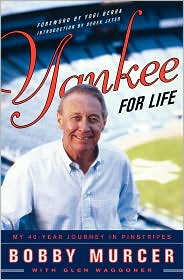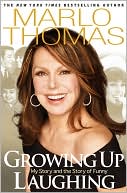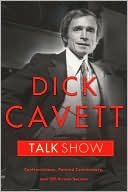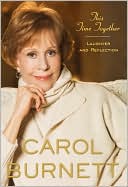Yankee for Life: My 40-Year Journey in Pinstripes
As he stepped to the plate at Yankee Stadium on opening day in 1966, Bobby Murcer carried with him the hopes and expectations of Yankees fans looking for the next Mickey Mantle. Bobby wasn't the next Mick, of course, but he became one of the most beloved Yankees of all time.\ Yankee for Life is Murcer's account of his stellar career as both a player and an Emmy Award-winning broadcaster. With self-effacing humor and down-home charm, he shares fascinating and illuminating anecdotes about...
Search in google:
A heartwarming and personal memoir by former Yankees great Bobby Murcer about his many years in pinstripes and his courageous fight against cancer. When Bobby Murcer opened the 1965 season in pinstripes as a New York Yankee, he faced impossible odds. Like his immediate predecessor, he was a phenom from Oklahoma. Like his predecessor, he came up as a shortstop and was turned into a centerfielder. Like his predecessor, he took his first at-bat as a Yankee when he was 19. But unlike his predecessor, Bobby Murcer wasn't Mickey Mantle. Bobby Murcer was a very good baseball player, the best player on a series of mediocre Yankee teams. But "The Mick" was a great baseball player, a first-ballot Hall of Famer, a three-time MVP who led the Yankees to seven World Championships. How could Bobby Murcer possibly live up to the expectations of Yankee fans? How could he possibly be the Next Mickey Mantle? He couldn't. He didn't. And yet, over a span of 12 seasons in the Bronx, Bobby Murcer became one of the most popular Yankees of all time, as beloved a figure in pinstripes as... his predecessor. Yankee for Life is the story of Bobby Murcer's career as a ballplayer and of his current career as a commentator and analyst for Yankee baseball on TV (since 1983). It's the inside story of lifelong friendships with Yankee legends -- Yogi Berra (who has written the foreword to the book), Phil Rizzuto, Thurman Munson and ... yes, his predecessor. But that's only half the story. Just before Christmas 2006, Bobby Murcer and his wife and oldest friend, Kay Murcer, went to Houston's M. D. Anderson for some tests, including a biopsy and an MRI. He'd told some close friends about the trip, so when he got the results -- a cancerous brain tumor that required surgery the following day -- he had to call them back and tell them he and Kay wouldn't be home for Christmas. The second half of Bobby Murcer's story is about his courageous, inspiring, and -- yes -- upbeat struggle against cancer. The two stories combine in a surprising, funny, insightful tale about baseball, family, and courage, told by a true Yankee for Life. Publishers Weekly Murcer may not be one of the most famous New York Yankees , but he comes across as one of the most likeable in this new memoir. Few young boys grow up to fulfill their childhood ambitions, but Murcer's one of the lucky ones, meeting his "lifelong dream" of signing with the Yankees at the age of 19 (1965 was his rookie year with the team). True to its title, the long-time New York player/broadcaster describes the day he was traded from the Yankees to the Giants in 1974 as a "nightmare," and how it "ripped his heart out" watching his beloved club win two World Series during his four-year absence from the team. None of Murcer's on-the-field stories are particularly notable, and most non-Yankee fans may roll their eyes at Murcer's somewhat overbearing passion for the team many love to hate. But the human side to the man shines through, especially when relating stories of his friend Thurman Munson's tragic death, and most importantly, his own battle with brain cancer. Murcer gives a glimpse into his struggle in the opening chapter before encapsulating what any family goes through in the book's closing pages. There are laughs sprinkled in as well, mostly concentrated in the chapter about Murcer's quirky broadcast partner, Phil Rizzuto ("WW" in the scorebook, in Rizzuto's mind, stands for "Wasn't Watching"). Copyright © Reed Business Information, a division of Reed Elsevier Inc. All rights reserved.
Yankee for Life My 40-Year Journey in Pinstripes \ By Bobby Murcer \ HarperCollins Publishers, Inc. Copyright © 2008 Bobby Murcer\ All right reserved.\ ISBN: 9780061473418 \ \ \ \ Chapter One\ A Major League Headache\ During the summer of 2006, I began getting a lot of headaches. No big deal. More annoying than anything else. I figured they were just sinus headaches. As a Yankee TV broadcaster, I put in a lot of hours in the air, at least six or seven flights a month. All that going in and out of pressurized cabins can really mess with your sinuses. Ask people who travel a lot; that's what they'll tell you.\ I've never been big on pills, and the few aspirin I took didn't do any good, which just confirmed my thinking on the subject. The headaches would stop when they were good and ready: end of story.\ But after a while, maybe a month or so, they started getting worse and more frequent.\ So finally, at Kay's urging, I went to an ear, nose, and throat specialist. Mind you, I still figured the headaches would go away sooner or later; worst case when the season was over and I stopped all that air travel. Heck, they were just sinus headaches.\ Well, the ENT, a good friend and old high school classmate of ours named Dr. Ronnie Wright, checked me out and said, "You may have an infection in there. For us to figure out if it's a deep infection, let's do a CT scan on you." (That's what they used to call a CAT scan, which is a three-dimensional, high-tech X-ray.) So at the end of July I had a CT scan performed at MercyHospital in Oklahoma City.\ After the exam, Ronnie came back in to go over the results. He'd read them, the other radiologists there at Mercy read them, and they all came up with the same conclusion: nothing.\ By "nothing," of course, they meant no infection, nothing abnormal in my sinuses. So Ronnie didn't give me any special medications. Just "Tylenol as needed." That's basically what it came down to.\ But the headaches continued. And they got progressively worse over August and early September. They weren't migraines. I didn't get nauseous or anything. They just hurt enough to be annoying. And they weren't on just one side, the way I understand a lot of migraines are. They were mostly in the front of my head and every now and then in the back of my head as well. Nothing I couldn't manage, mind you, but by the end of the summer they were coming more often.\ Then, in October and November, the pain cranked up a notch or two. But that wasn't the worst part. The worst part was the fatigue factor that kicked in, big-time. For no good reason, I found myself getting tired, really exhausted.\ That, more than the headaches, got my attention.\ Okay, there's a little break in the action, and I'd like to introduce my longtime playing partner, someone I've known since I was 11 years old. Diana Kay Rhodes Murcer and I have been finishing each other's sentences for more than four decades. Her wise counsel and enduring love lurk behind every word in the book, so I think it's only fitting that you should hear from her directly from time to time as this story unfolds.\ After all, in every possible sense, it's our story.\ Later, when we found out what had been causing all this mess and set about fixing it, I asked Kay what it had felt like for that crazy Christmas season, living with an alien. And she just said, "Very unsettling."\ I knew immediately what she meant. Not knowing what's wrong with you can sometimes be worse than knowing, even when what's wrong with you turns out to be brain cancer.\ A few weeks earlier, when the headaches had come back with a vengeance, and the fatigue was laying me low, leaving me without the strength to play golf or do any of my usual physical activities, I had called our family physician, Dr. Hanna Saadah, and told him, "I think there's something wrong with my blood, and that's what's causing this doggone fatigue. I need to come and see you." So he brought me in and ran blood tests, which all came back negative.\ So much for my brilliant self-diagnosis.\ Dr. Saadah did think he had just the ticket for the headaches, though. "Here's what I'm going to do," he said. "I'm going to give you a couple of shots in your sinuses, and that'll relieve your headaches, believe me." So that's what he did: two injections on each side of my nose. They hurt like the dickens, and for the first couple of days, they seemed to give me some relief.\ But then the headaches came back, and they wouldn't go away.\ Finally Kay, God bless her, got up the morning of the 23rd and called Dr. Saadah at home. I guess the anxiety and worry had gotten to her. Thank goodness it had. That call might have saved my life.\ Kay had already rebooked our flight to California for the following week; neither one of us was in any mood for travel. We were both feeling pretty let down that we'd have to wait for Dr. Saadah to return from his vacation before I could see him, so we decided, the heck with it, let's just go to a movie. I mean, we were so frustrated, so unsettled—there's that word again—that we'd just go to a movie and chill out. But the movie we chose had just the reverse effect: The Good Shepherd was bleak and depressing and nearly three hours long. (It only seemed longer.)\ But the minute we walked out of the movie theater, I saw I had missed a call on my cell from Dr. Saadah. I called him back, and he said, "Bobby, I went into the office, and I looked at your records. Let's give you an MRI first thing tomorrow morning. I really don't like the fact you still have your headache."\ \ \ Continues... \ \ \ Excerpted from Yankee for Life by Bobby Murcer Copyright © 2008 by Bobby Murcer. Excerpted by permission.\ All rights reserved. No part of this excerpt may be reproduced or reprinted without permission in writing from the publisher.\ Excerpts are provided by Dial-A-Book Inc. solely for the personal use of visitors to this web site.\
Foreword: A True Yankee Yogi Berra ixIntroduction: A Dream Come True Derek Jeter xiPreface: Yankee for Life xiiiA Major League Headache 1Boomer Sooner 11Bound for Glory... 25... But a Ways to Go 31Welcome to the Big Leagues, Kid 41The Great Depression 55Changing Times 73Life in Exile 91Homecoming 111The Long Goodbye 127How Do I Get Up to the Booth? 141"Murcer, You Huckleberry!" 167Me and Mick 179A Family Affair 187Pinstripe All-Stars, 1969-Today 199A Wonderful Town 215No Smoking in the Dugout 229Piece of Cake! 241Happy New Year! 259My New Team 273A Whole New Ball Game 283Play Ball! 301
\ From Barnes & NobleDuring his 17-year (1965-83) major league career, Bobby Murcer played briefly with two other teams; but for millions of fans, he was always and always will be a Yankee. Apparently, this Oklahoma native agrees: For more than two decades, this former five-time All-Star has been a Yankees broadcaster, a job he assumed almost immediately after his retirement. This memoir recounts his days of glory and the challenges he faced as the much-touted heir apparent to Mickey Mantle, but it also describes his more recent, daunting battle with brain cancer. A baseball memoir with an intense human edge.\ \ \ \ \ Publishers WeeklyMurcer may not be one of the most famous New York Yankees , but he comes across as one of the most likeable in this new memoir. Few young boys grow up to fulfill their childhood ambitions, but Murcer's one of the lucky ones, meeting his "lifelong dream" of signing with the Yankees at the age of 19 (1965 was his rookie year with the team). True to its title, the long-time New York player/broadcaster describes the day he was traded from the Yankees to the Giants in 1974 as a "nightmare," and how it "ripped his heart out" watching his beloved club win two World Series during his four-year absence from the team. None of Murcer's on-the-field stories are particularly notable, and most non-Yankee fans may roll their eyes at Murcer's somewhat overbearing passion for the team many love to hate. But the human side to the man shines through, especially when relating stories of his friend Thurman Munson's tragic death, and most importantly, his own battle with brain cancer. Murcer gives a glimpse into his struggle in the opening chapter before encapsulating what any family goes through in the book's closing pages. There are laughs sprinkled in as well, mostly concentrated in the chapter about Murcer's quirky broadcast partner, Phil Rizzuto ("WW" in the scorebook, in Rizzuto's mind, stands for "Wasn't Watching"). \ Copyright © Reed Business Information, a division of Reed Elsevier Inc. All rights reserved.\ \ \ Library JournalEnjoyable, sometimes humorous, and occasionally revealing love fests to American sports' most storied franchise, these two volumes present the observations of the great former pinstriper Berra and near-great Murcer. The two ex-Yankees agree about what makes a truly successful team: concern for one's teammates and a largely selfless dedication to the task of winning. No player was more successful in that regard than Berra, whose Yankees won 14 pes and ten World Series championships during his career, in contrast to the ill-timed Murcer, who just missed out on the resurgent Yankees of the late 1970s and barely made a dent on the 1981 pennant-winning team. Berra praises star players Joe DiMaggio and Mickey Mantle for setting an example by working "through tough times," making no excuses, striving for excellence, and passionately caring most about the well-being of the Yankees. He shares stories about Bill Dickey teaching him the art of catching, Jackie Robinson's burning desire to win, Derek Jeter's devotion to the team, Mantle's determination to be "a great teammate," Joe McCarthy and Joe Torre's confidence, DiMaggio's insistence that others play as hard and intelligently as he did, and Reggie Jackson's work ethic. Murcer, projected to be the next Mickey Mantle, never quite reached such heights but felt he had become part of the Yankees when Mick decided Murcer belonged. After exploring the ups and downs of his playing days, Murcer describes his all-Yankee team, the cancer that afflicted him, and issues ranging from steroids and asterisks to Marvin Miller, longtime union leader who devised the game's initial collective bargaining agreement. Both books are recommended for generallibraries.\ —R.C. Cottrell\ \ \ \ \ \ Newsday"An inspiration."\ \ \ \ \ David Cone"What an incredible book. Bobby’s an amazingly courageous guy to go through all that and tell his story."\ \






